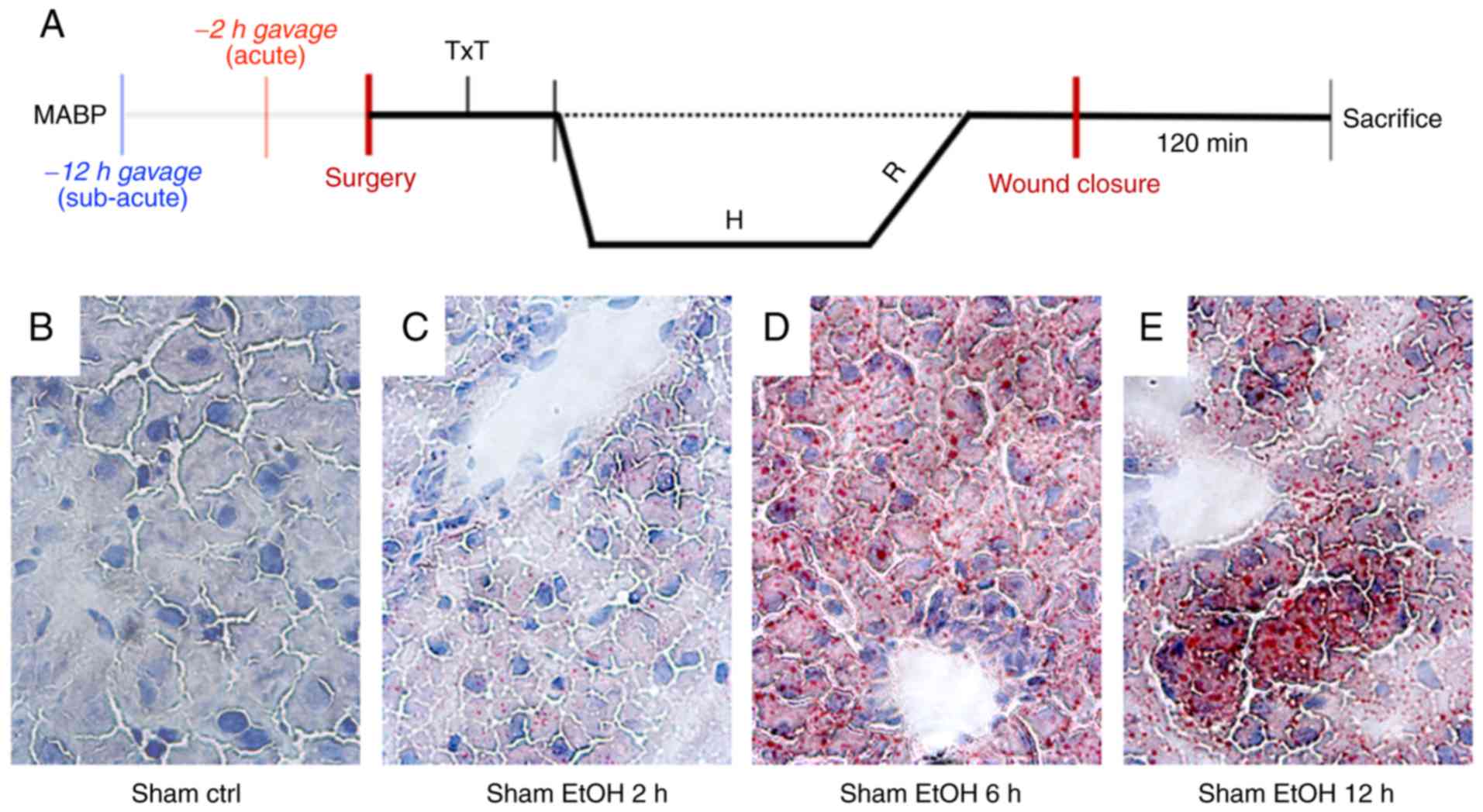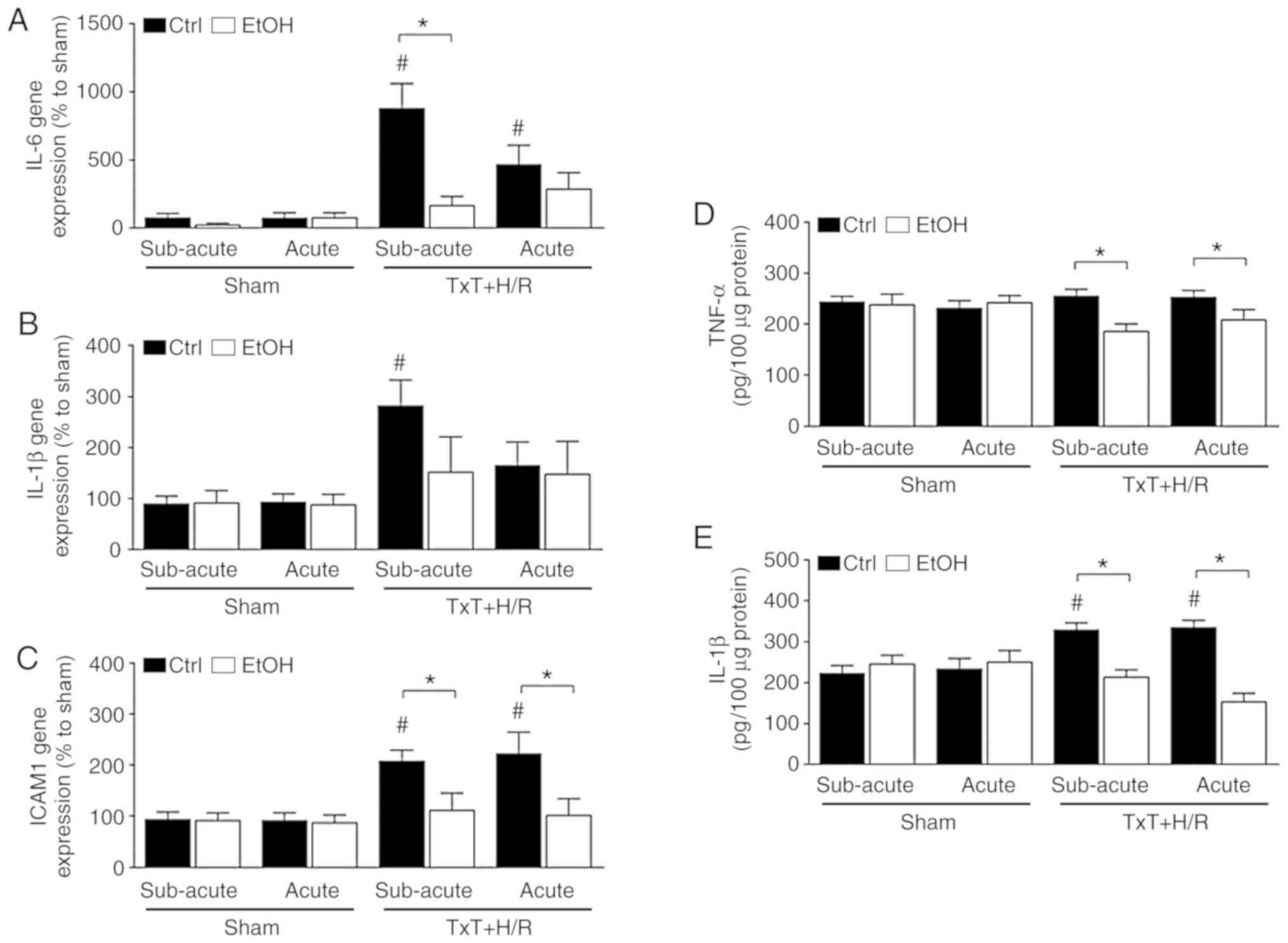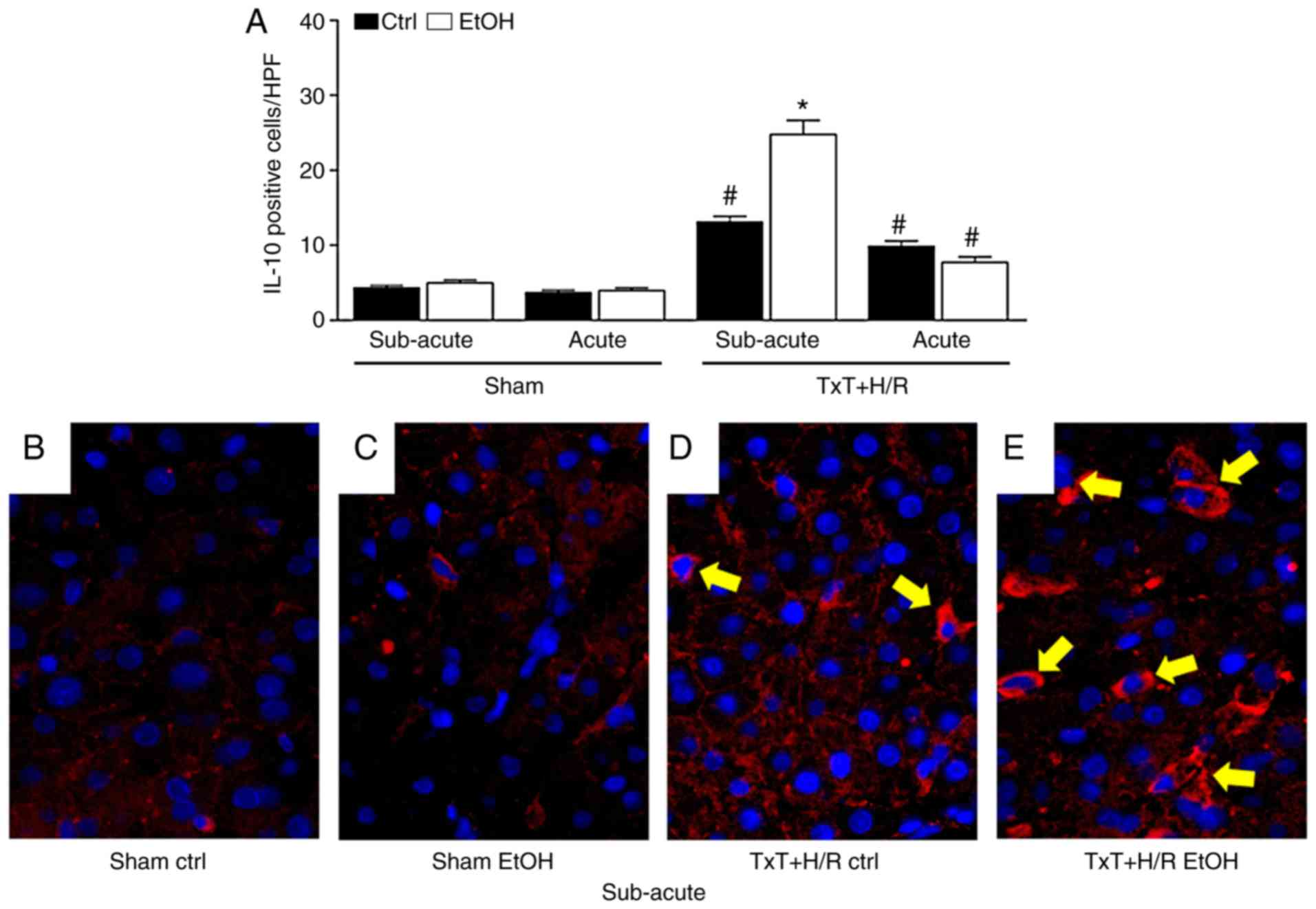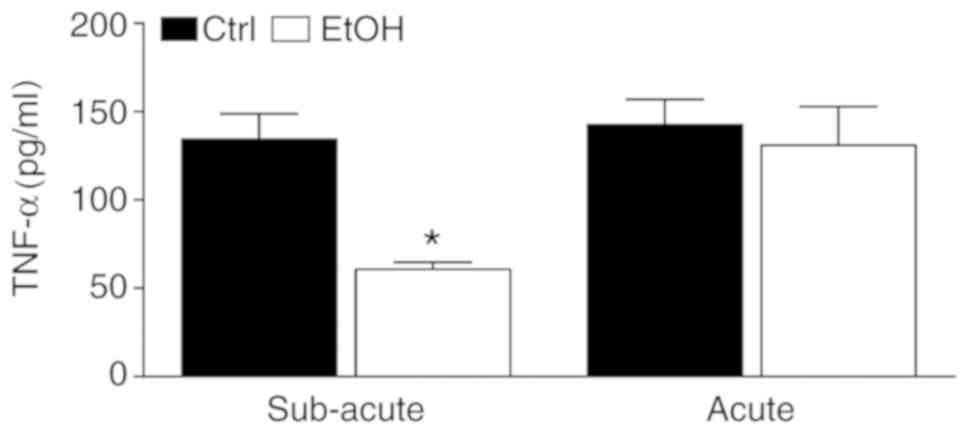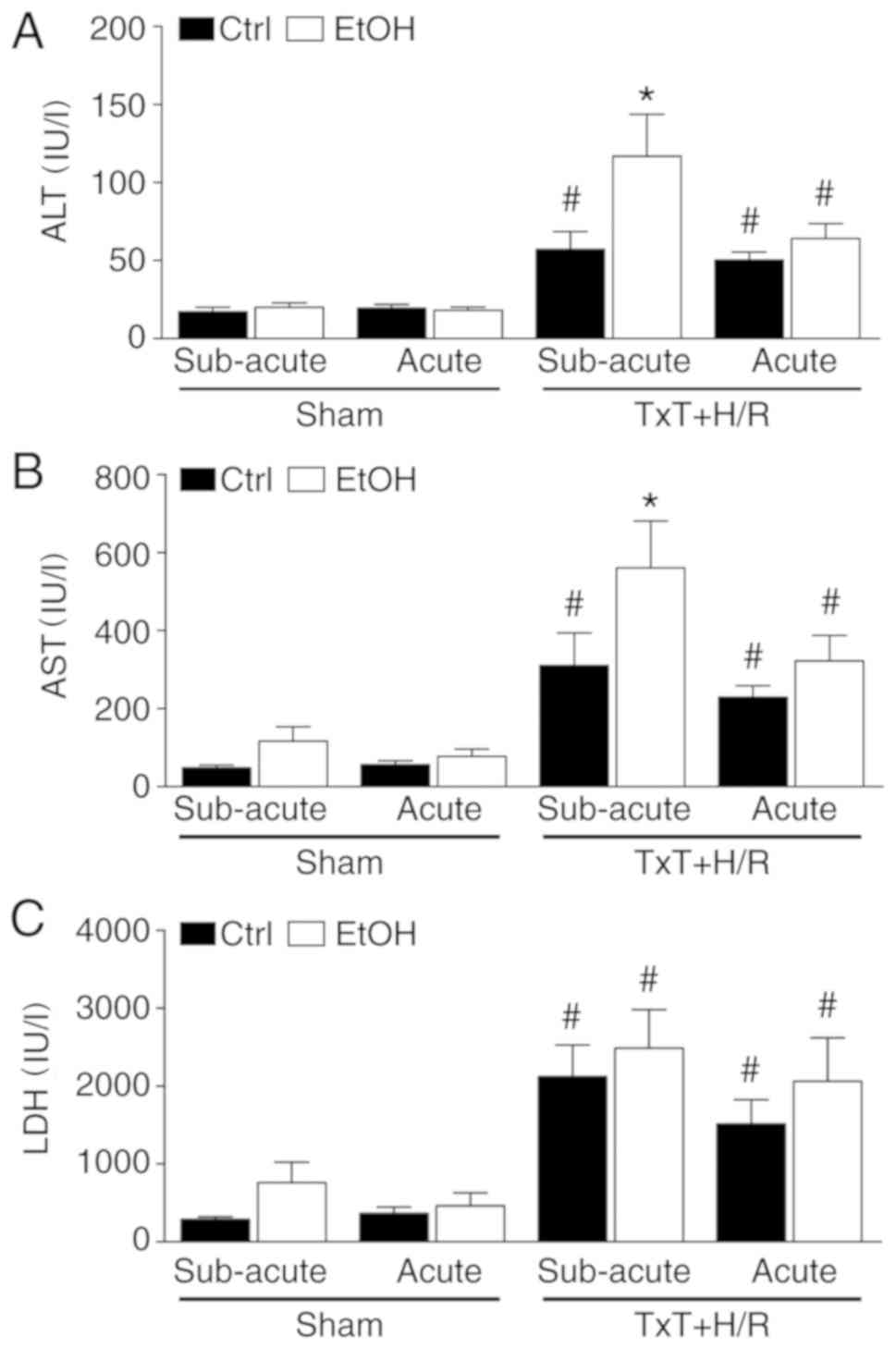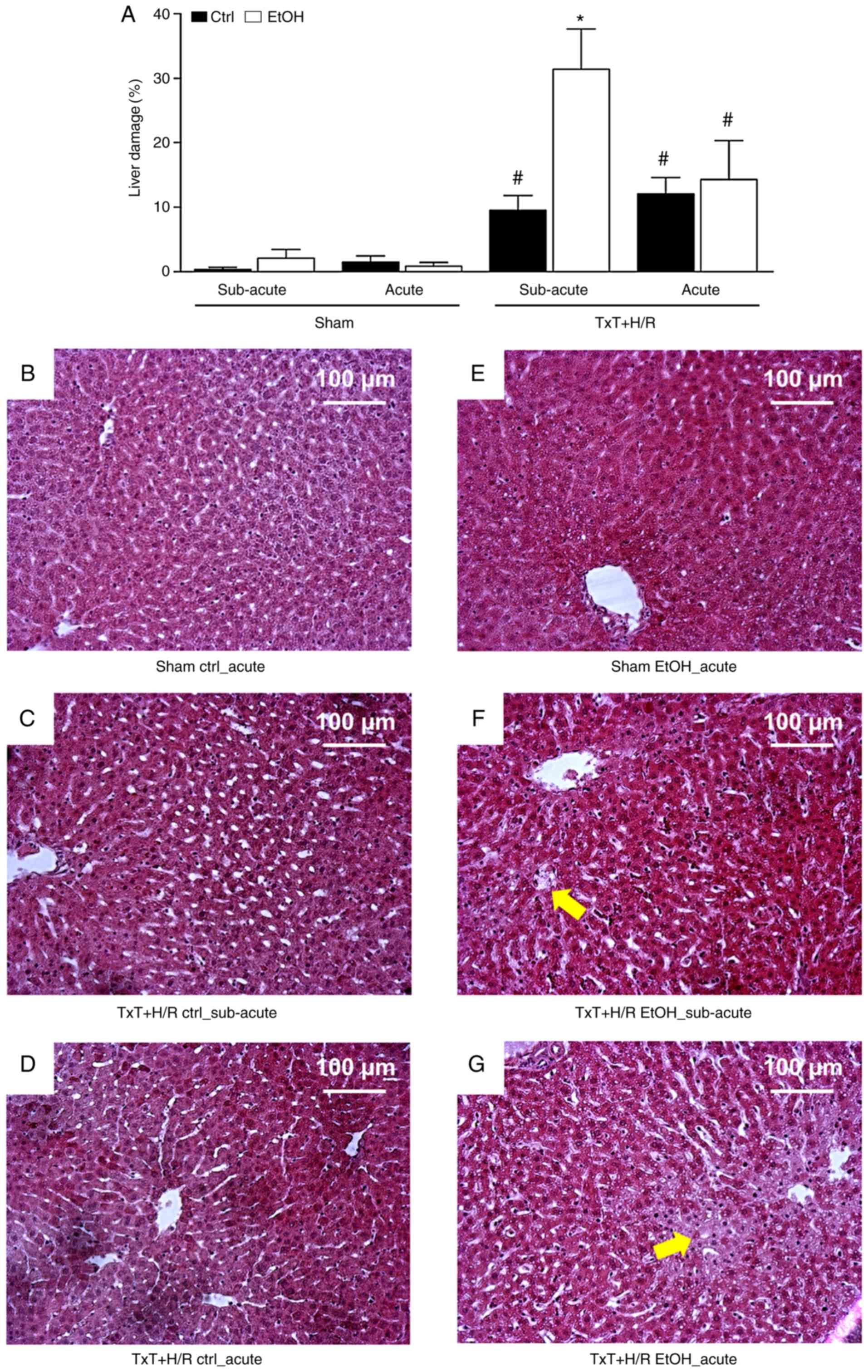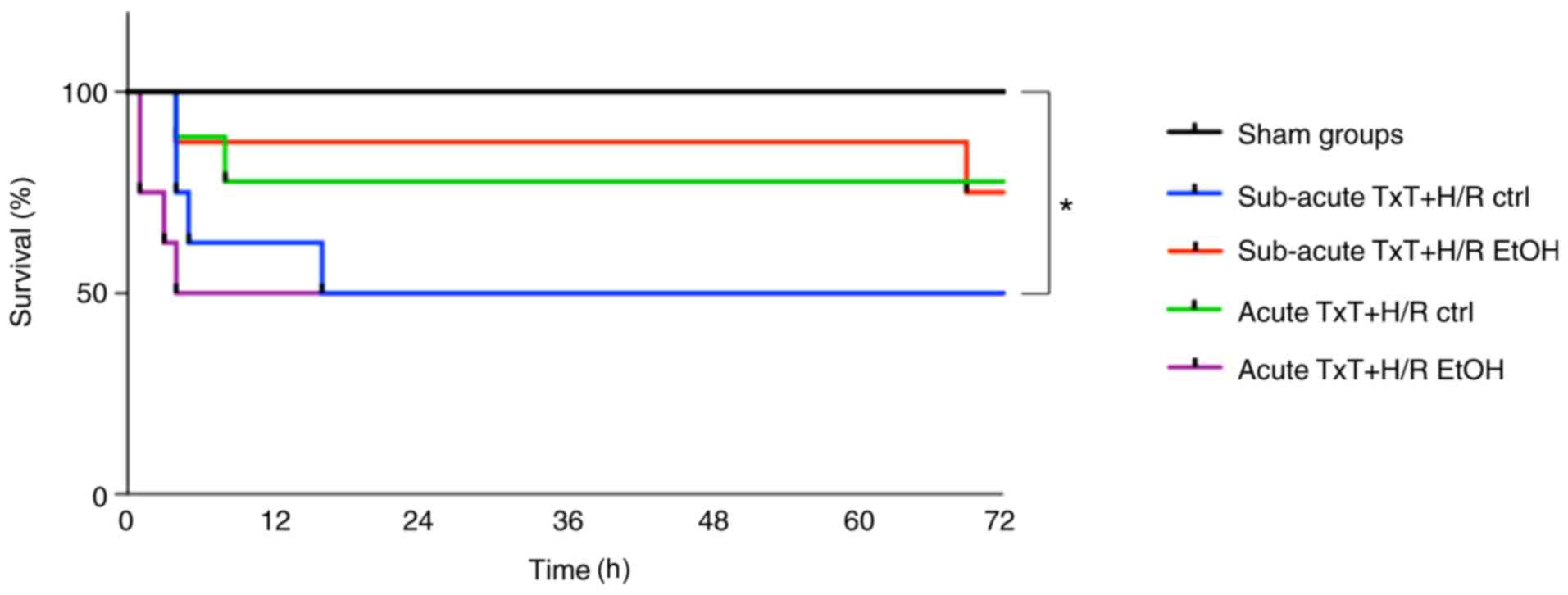|
1
|
Wutzler S, Lustenberger T, Relja B,
Lehnert M and Marzi I: Pathophysiology of multiple trauma:
Intensive care medicine and timing of treatment. Chirurg.
84:753–758. 2013.In German. View Article : Google Scholar : PubMed/NCBI
|
|
2
|
Relja B, Höhn C, Bormann F, Seyboth K,
Henrich D, Marzi I and Lehnert M: Acute alcohol intoxication
reduces mortality, inflammatory responses and hepatic injury after
haemorrhage and resuscitation in vivo. Br J Pharmacol.
165:1188–1199. 2012. View Article : Google Scholar :
|
|
3
|
Lefering R and Paffrath T: Reality of care
based on the data from the Trauma Registry of the German Society of
Trauma Surgery. Unfallchirurg. 115:30–32. 2012.In German.
View Article : Google Scholar : PubMed/NCBI
|
|
4
|
Spahn DR, Bouillon B, Cerny V, Coats TJ,
Duranteau J, Fernández-Mondéjar E, Filipescu D, Hunt BJ, Komadina
R, Nardi G, et al: Management of bleeding and coagulopathy
following major trauma: An updated European guideline. Crit Care.
17:R762013. View
Article : Google Scholar : PubMed/NCBI
|
|
5
|
Maier M, Geiger EV, Wutzler S, Lehnert M,
Wiercinski A, Buurman WA and Marzi I: Role of lung contusions on
post-traumatic inflammatory response and organ dysfunction in
traumatized patients. Eur J Trauma Emerg Surg. 35:463–469. 2009.
View Article : Google Scholar : PubMed/NCBI
|
|
6
|
Huber-Lang M, Gebhard F, Schmidt CQ,
Palmer A, Denk S and Wiegner R: Complement therapeutic strategies
in trauma, hemorrhagic shock and systemic inflammation-closing
Pandora's box? Semin Immunol. 28:278–284. 2016. View Article : Google Scholar : PubMed/NCBI
|
|
7
|
Dong W, Cai B, Peña G, Pisarenko V, Vida
G, Doucet D, Lee M, Sharpe S, Lu Q, Xu DZ, et al: Ethyl pyruvate
prevents inflammatory responses and organ damage during
resuscitation in porcine hemorrhage. Shock. 34:205–213. 2010.
View Article : Google Scholar :
|
|
8
|
Levy RM, Mollen KP, Prince JM, Kaczorowski
DJ, Vallabhaneni R, Liu S, Tracey KJ, Lotze MT, Hackam DJ, Fink MP,
et al: Systemic inflammation and remote organ injury following
trauma require HMGB1. Am J Physiol Regul Integr Comp Physiol.
293:R1538–R1544. 2007. View Article : Google Scholar : PubMed/NCBI
|
|
9
|
Tak PP and Firestein GS: NF-kappaB: A key
role in inflammatory diseases. J Clin Invest. 107:7–11. 2001.
View Article : Google Scholar : PubMed/NCBI
|
|
10
|
Relja B, Menke J, Wagner N, Auner B, Voth
M, Nau C and Marzi I: Effects of positive blood alcohol
concentration on outcome and systemic interleukin-6 in major trauma
patients. Injury. 47:640–645. 2016. View Article : Google Scholar : PubMed/NCBI
|
|
11
|
Wagner N, Akbarpour A, Mörs K, Voth M,
Störmann P, Auner B, Lehnert M, Marzi I and Relja B: Alcohol
intoxication reduces systemic interleukin-6 levels and leukocyte
counts after severe TBI compared with not intoxicated TBI patients.
Shock. 46:261–269. 2016. View Article : Google Scholar : PubMed/NCBI
|
|
12
|
Phelan H, Stahls P, Hunt J, Bagby GJ and
Molina PE: Impact of alcohol intoxication on hemodynamic,
metabolic, and cytokine responses to hemorrhagic shock. J Trauma.
52:675–682. 2002.PubMed/NCBI
|
|
13
|
Zambell KL, Phelan H, Vande Stouwe C,
Zhang P, Shellito JE and Molina PE: Acute alcohol intoxication
during hemorrhagic shock: Impact on host defense from infection.
Alcohol Clin Exp Res. 28:635–642. 2004. View Article : Google Scholar : PubMed/NCBI
|
|
14
|
Lin HL, Lin TY, Soo KM, Chen CW, Kuo LC,
Lin YK, Lee WC and Lin CL: The effect of alcohol intoxication on
mortality of blunt head injury. Biomed Res Int. 2014:6192312014.
View Article : Google Scholar : PubMed/NCBI
|
|
15
|
Berry C, Ley EJ, Margulies DR, Mirocha J,
Bukur M, Malinoski D and Salim A: Correlating the blood alcohol
concentration with outcome after traumatic brain injury: Too much
is not a bad thing. Am Surg. 77:1416–1419. 2011.PubMed/NCBI
|
|
16
|
Steiner JL, Crowell KT and Lang CH: Impact
of alcohol on glycemic control and insulin action. Biomolecules.
5:2223–2246. 2015. View Article : Google Scholar : PubMed/NCBI
|
|
17
|
Wagner N, Franz N, Dieteren S, Perl M,
Mörs K, Marzi I and Relja B: Acute alcohol binge deteriorates
metabolic and respiratory compensation capability after blunt chest
trauma followed by hemorrhagic shock-a new research model. Alcohol
Clin Exp Res. 41:1559–1567. 2017. View Article : Google Scholar : PubMed/NCBI
|
|
18
|
Kilkenny C, Browne WJ, Cuthill IC, Emerson
M and Altman DG: Improving bioscience research reporting: The
ARRIVE guidelines for reporting animal research. PLoS Biol.
8:e10004122010. View Article : Google Scholar : PubMed/NCBI
|
|
19
|
Zhong Z, Connor H, Mason RP, Qu W,
Stachlewitz RF, Gao W, Lemasters JJ and Thurman RG: Destruction of
Kupffer cells increases survival and reduces graft injury after
transplantation of fatty livers from ethanol-treated rats. Liver
Transpl Surg. 2:383–387. 1996. View Article : Google Scholar : PubMed/NCBI
|
|
20
|
Ylikahri RH, Kähönen MT and Hassinen I:
Modification of metabolic effects of ethanol by fructose. Acta Med
Scand Suppl. 542:141–150. 1972.PubMed/NCBI
|
|
21
|
Enomoto N, Ikejima K, Yamashina S, Enomoto
A, Nishiura T, Nishimura T, Brenner DA, Schemmer P, Bradford BU,
Rivera CA, et al: Kupffer cell-derived prostaglandin E(2) is
involved in alcohol-induced fat accumulation in rat liver. Am J
Physiol Gastrointest Liver Physiol. 279:G100–G106. 2000. View Article : Google Scholar : PubMed/NCBI
|
|
22
|
Relja B, Wilhelm K, Wang M, Henrich D,
Marzi I and Lehnert M: Acute ethanol gavage attenuates
hemorrhage/resuscitation-induced hepatic oxidative stress in rats.
Oxid Med Cell Longev. 2012:9834272012. View Article : Google Scholar : PubMed/NCBI
|
|
23
|
Kozan R, Ayyildiz M, Yildirim M and Agar
E: The effect of alphatocopherol in the acute ethanol intake and
its withdrawal on penicillin-induced epilepsy. Acta Neurobiol Exp
(Wars). 69:177–188. 2009.
|
|
24
|
Liener UC, Knöferl MW, Sträter J, Barth
TF, Pauser EM, Nüssler AK, Kinzl L, Brückner UB and Gebhard F:
Induction of apoptosis following blunt chest trauma. Shock.
20:511–516. 2003. View Article : Google Scholar : PubMed/NCBI
|
|
25
|
Seitz DH, Perl M, Mangold S, Neddermann A,
Braumüller ST, Zhou S, Bachem MG, Huber-Lang MS and Knöferl MW:
Pulmonary contusion induces alveolar type 2 epithelial cell
apoptosis: Role of alveolar macrophages and neutrophils. Shock.
30:537–544. 2008. View Article : Google Scholar : PubMed/NCBI
|
|
26
|
Lehnert M, Relja B, Sun-Young Lee V,
Schwestka B, Henrich D, Czerny C, Froh M, Borsello T and Marzi I: A
peptide inhibitor of C-jun N-terminal kinase modulates hepatic
damage and the inflammatory response after hemorrhagic shock and
resuscitation. Shock. 30:159–165. 2008.PubMed/NCBI
|
|
27
|
Relja B, Schwestka B, Lee VS, Henrich D,
Czerny C, Borsello T, Marzi I and Lehnert M: Inhibition of c-Jun
N-terminal kinase after hemorrhage but before resuscitation
mitigates hepatic damage and inflammatory response in male rats.
Shock. 32:509–516. 2009. View Article : Google Scholar : PubMed/NCBI
|
|
28
|
Relja B, Töttel E, Breig L, Henrich D,
Schneider H, Marzi I and Lehnert M: Plant polyphenols attenuate
hepatic injury after hemorrhage/resuscitation by inhibition of
apoptosis, oxidative stress, and inflammation via NF-kappaB in
rats. Eur J Nutr. 51:311–321. 2012. View Article : Google Scholar
|
|
29
|
Schmittgen TD and Livak KJ: Analyzing
real-time PCR data by the comparative C(T) method. Nat Protoc.
3:1101–1108. 2008. View Article : Google Scholar : PubMed/NCBI
|
|
30
|
Pfeifer R, Kobbe P, Darwiche SS, Billiar
TR and Pape HC: Role of hemorrhage in the induction of systemic
inflammation and remote organ damage: Analysis of combined
pseudo-fracture and hemorrhagic shock. J Orthop Res. 29:270–274.
2011. View Article : Google Scholar
|
|
31
|
Hu TM, Lee RP, Lee CJ, Subeq YM, Lin NT
and Hsu BG: Heavy ethanol intoxication increases proinflammatory
cytokines and aggravates hemorrhagic shock-induced organ damage in
rats. Mediators Inflamm. 2013:1217862013. View Article : Google Scholar : PubMed/NCBI
|
|
32
|
Desiderio MA: The potentiation of the
response to blunt cardiac trauma by ethanol in dogs. J Trauma.
26:467–473. 1986. View Article : Google Scholar : PubMed/NCBI
|
|
33
|
Desiderio MA: Effects of acute, oral
ethanol on cardiovascular performance before and after experimental
blunt cardiac trauma. J Trauma. 27:267–277. 1987. View Article : Google Scholar : PubMed/NCBI
|
|
34
|
Seitz DH, Perl M, Liener UC, Tauchmann B,
Braumüller ST, Brückner UB, Gebhard F and Knöferl MW: Inflammatory
alterations in a novel combination model of blunt chest trauma and
hemorrhagic shock. J Trauma. 70:189–196. 2011. View Article : Google Scholar
|
|
35
|
Sato H, Tanaka T and Kasai K: Ethanol
consumption impairs the hemodynamic response to hemorrhagic shock
in rats. Alcohol. 47:47–52. 2013. View Article : Google Scholar
|
|
36
|
Mathis KW, Zambell K, Olubadewo JO and
Molina PE: Altered hemodynamic counter-regulation to hemorrhage by
acute moderate alcohol intoxication. Shock. 26:55–61. 2006.
View Article : Google Scholar : PubMed/NCBI
|
|
37
|
Miller AM, Wang H, Bertola A, Park O,
Horiguchi N, Ki SH, Yin S, Lafdil F and Gao B:
Inflammation-associated interleukin-6/signal transducer and
activator of transcription 3 activation ameliorates alcoholic and
nonalcoholic fatty liver diseases in interleukin-10-deficient mice.
Hepatology. 54:846–856. 2011. View Article : Google Scholar : PubMed/NCBI
|
|
38
|
Fausto N, Campbell JS and Riehle KJ: Liver
regeneration. Hepatology. 43:S45–S53. 2006. View Article : Google Scholar : PubMed/NCBI
|
|
39
|
Koniaris LG, McKillop IH, Schwartz SI and
Zimmers TA: Liver regeneration. J Am Coll Surg. 197:634–659. 2003.
View Article : Google Scholar : PubMed/NCBI
|
|
40
|
Wang HJ, Zakhari S and Jung MK: Alcohol,
inflammation, and gut-liver-brain interactions in tissue damage and
disease development. World J Gastroenterol. 16:1304–1313. 2010.
View Article : Google Scholar : PubMed/NCBI
|
|
41
|
Gao B: Hepatoprotective and
anti-inflammatory cytokines in alcoholic liver disease. J
Gastroenterol Hepatol. 27(Suppl 2): S89–S93. 2012. View Article : Google Scholar
|
|
42
|
Hill DB, D'Souza NB, Lee EY, Burikhanov R,
Deaciuc IV and de Villiers WJ: A role for interleukin-10 in
alcohol-induced liver sensitization to bacterial
lipopolysaccharide. Alcohol Clin Exp Res. 26:74–82. 2002.
View Article : Google Scholar : PubMed/NCBI
|
|
43
|
El-Assal O, Hong F, Kim WH, Radaeva S and
Gao B: IL-6-deficient mice are susceptible to ethanol-induced
hepatic steatosis: IL-6 protects against ethanol-induced oxidative
stress and mitochondrial permeability transition in the liver. Cell
Mol Immunol. 1:205–211. 2004.
|
|
44
|
Mörs K, Hörauf JA, Kany S, Wagner N, Sturm
R, Woschek M, Perl M, Marzi I and Relja B: Ethanol decreases
inflammatory response in human lung epithelial cells by inhibiting
the canonical NF-κB-pathway. Cell Physiol Biochem. 43:17–30. 2017.
View Article : Google Scholar
|
|
45
|
Mandrekar P, Catalano D and Szabo G:
Inhibition of lipopoly-saccharide-mediated NFkappaB activation by
ethanol in human monocytes. Int Immunol. 11:1781–1790. 1999.
View Article : Google Scholar : PubMed/NCBI
|
|
46
|
Maraslioglu M, Oppermann E, Blattner C,
Weber R, Henrich D, Jobin C, Schleucher E, Marzi I and Lehnert M:
Chronic ethanol feeding modulates inflammatory mediators,
activation of nuclear factor-κB, and responsiveness to endotoxin in
murine Kupffer cells and circulating leukocytes. Mediators Inflamm.
2014:8086952014. View Article : Google Scholar
|
|
47
|
Wang F, Yang JL, Yu KK, Xu M, Xu YZ, Chen
L, Lu YM, Fang HS, Wang XY, Hu ZQ, et al: Activation of the NF-κB
pathway as a mechanism of alcohol enhanced progression and
metastasis of human hepatocellular carcinoma. Mol Cancer.
14:102015. View Article : Google Scholar
|
|
48
|
Bradbury A: Pattern and severity of injury
sustained by pedestrians in road traffic accidents with particular
reference to the effect of alcohol. Injury. 22:132–134. 1991.
View Article : Google Scholar : PubMed/NCBI
|
|
49
|
Zeckey C, Dannecker S, Hildebrand F,
Mommsen P, Scherer R, Probst C, Krettek C and Frink M: Alcohol and
multiple trauma: Is there an influence on the outcome? Alcohol.
45:245–251. 2011. View Article : Google Scholar
|
|
50
|
Johnston JJE and McGovern SJ: Alcohol
related falls: An interesting pattern of injuries. Emerg Med J.
21:185–188. 2004. View Article : Google Scholar : PubMed/NCBI
|
|
51
|
Weckbach S, Hohmann C, Braumueller S, Denk
S, Klohs B, Stahel PF, Gebhard F, Huber-Lang MS and Perl M:
Inflammatory and apoptotic alterations in serum and injured tissue
after experimental polytrauma in mice: Distinct early response
compared with single trauma or 'double-hit' injury. J Trauma Acute
Care Surg. 74:489–498. 2013. View Article : Google Scholar : PubMed/NCBI
|















